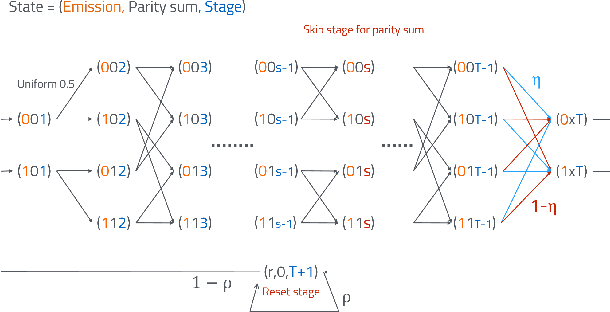Minimal Realization Problems for Hidden Markov Models
Paper and Code
Dec 14, 2015
Consider a stationary discrete random process with alphabet size d, which is assumed to be the output process of an unknown stationary Hidden Markov Model (HMM). Given the joint probabilities of finite length strings of the process, we are interested in finding a finite state generative model to describe the entire process. In particular, we focus on two classes of models: HMMs and quasi-HMMs, which is a strictly larger class of models containing HMMs. In the main theorem, we show that if the random process is generated by an HMM of order less or equal than k, and whose transition and observation probability matrix are in general position, namely almost everywhere on the parameter space, both the minimal quasi-HMM realization and the minimal HMM realization can be efficiently computed based on the joint probabilities of all the length N strings, for N > 4 lceil log_d(k) rceil +1. In this paper, we also aim to compare and connect the two lines of literature: realization theory of HMMs, and the recent development in learning latent variable models with tensor decomposition techniques.
 Add to Chrome
Add to Chrome Add to Firefox
Add to Firefox Add to Edge
Add to Edge